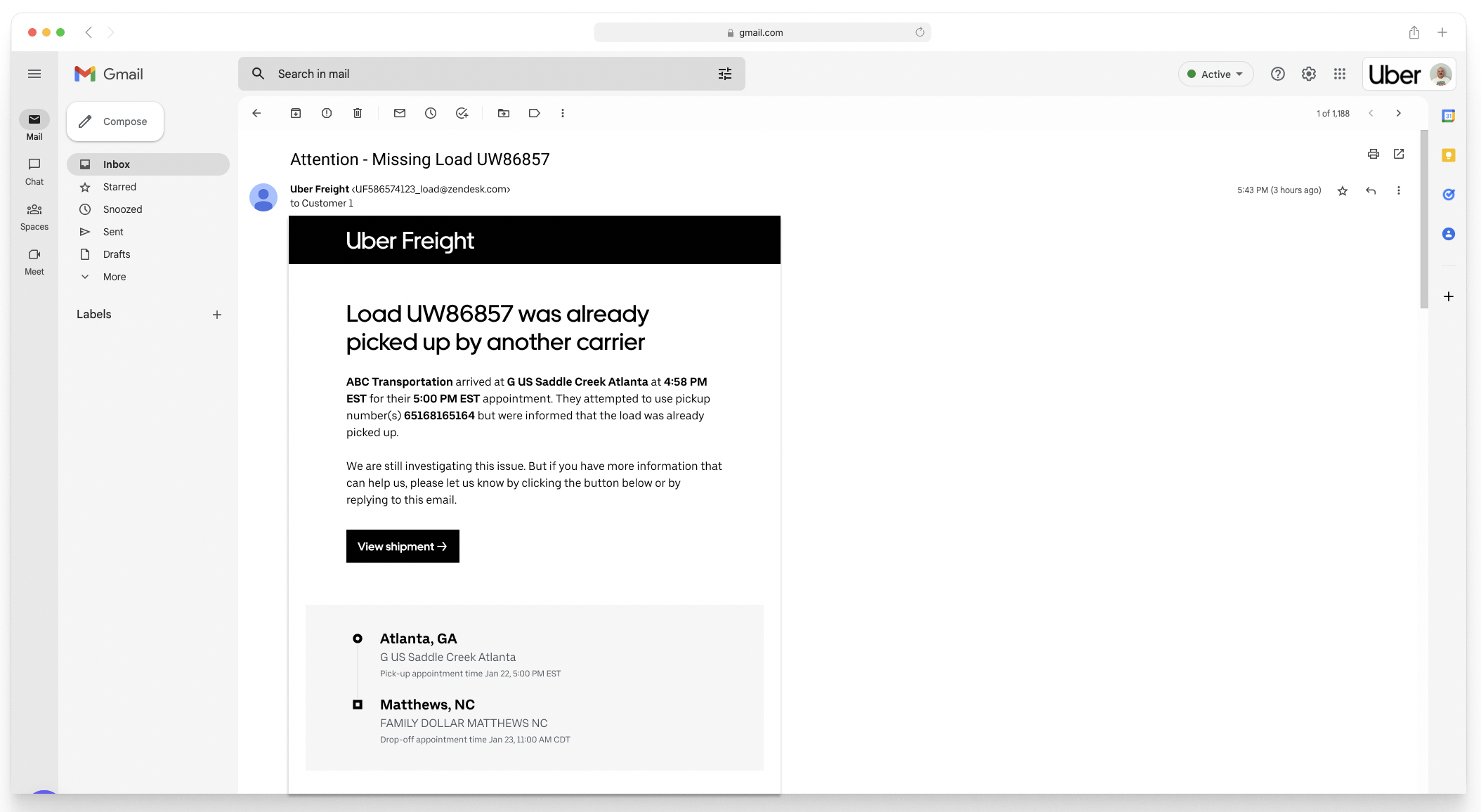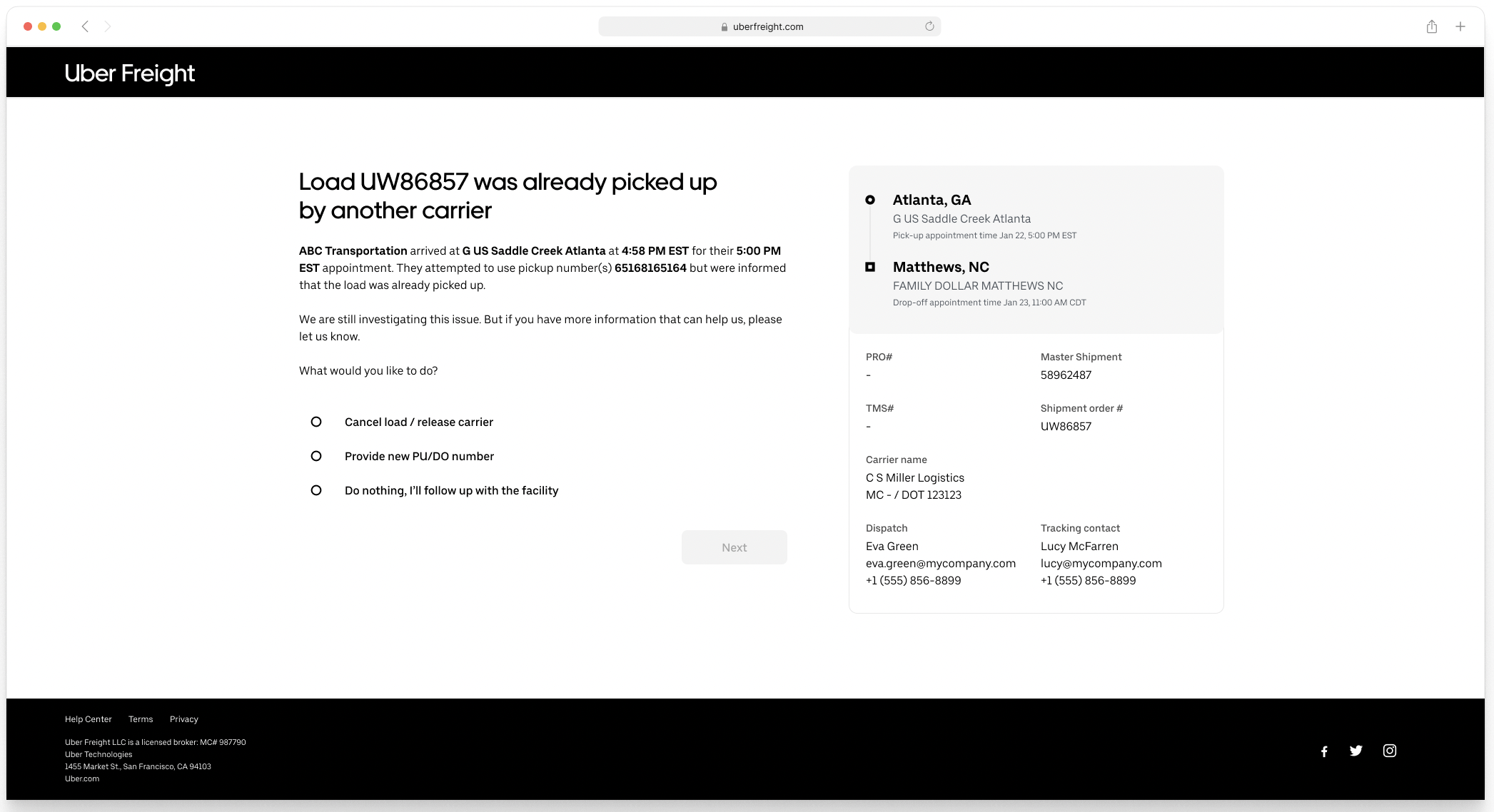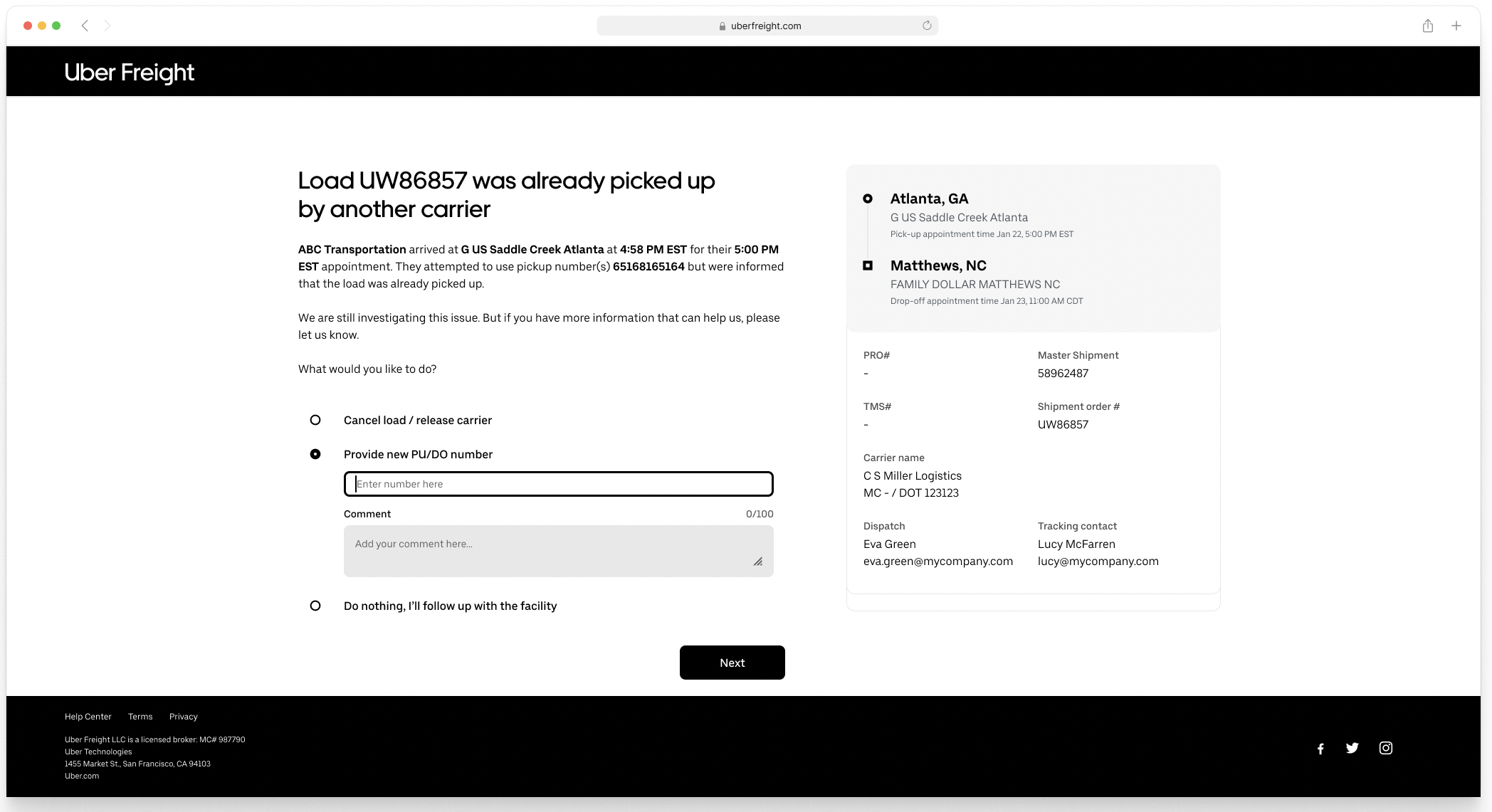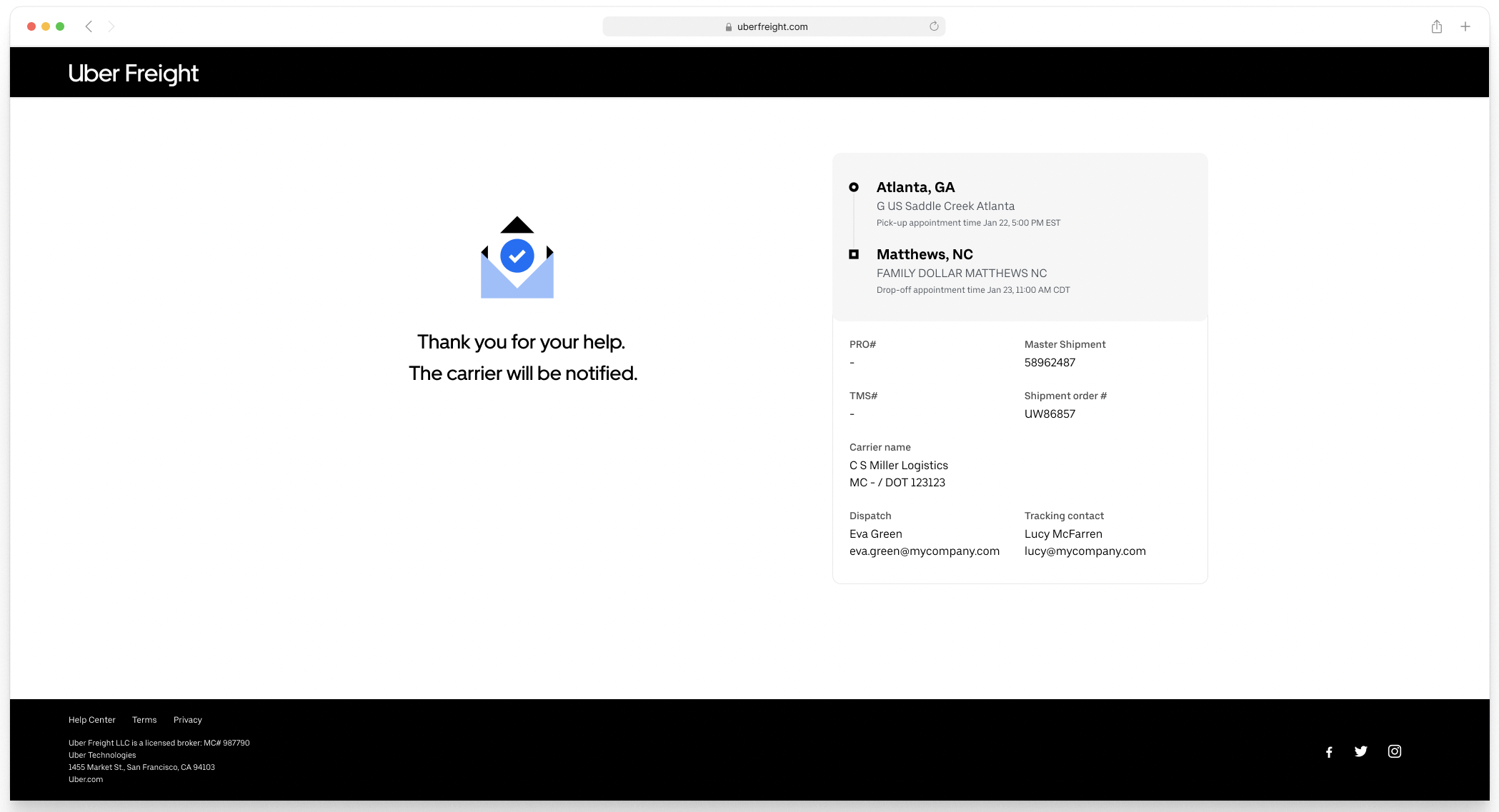About Uber Freight
Uber Freight is a logistics platform built on the power of Uber to reshape logistics and deliver reliability, flexibility, and transparency for shippers and carriers.
Click to enlarge image
The problem
“It takes Uber Freight too long to resolve my issue” is consistent feedback that we heard from our carriers.
Customer tickets spend a large portion of their lifecycle sitting in Zendesk queues. Whenever a ticket is created, switches departments, or receives a customer or carrier response, a ticket will re-open in a queue in Zendesk, waiting to be looked at. This “dead” queue time is the largest contributor to the long resolution times that carriers face on live loading issues.
Nearly two-thirds of a ticket’s resolution lifecycle was waiting to be looked at by an internal operator/agent.
1 - The hypothesis
We believe that by building a fully touchless foundation in cases where customer decision-making is “cut & dry.” Carriers and loads would be updated immediately, reducing carrier resolution time and improving ops efficiency.
How can we do this?
Automating “low hanging fruit” from Ops queues so they can focus on the most complex tickets and carriers experience faster resolution.
Providing customers with richer proactive notifications.
Removing Uber Freight as the bottleneck in connecting our carriers with customers for certain live load support issues.
Setting the foundation for the first fully automated support escalations.
2 - Success metrics
“KPI - 15 % reduction of support tickets related to live loading issues.
KPI - 10% reduction of calls per load related to live loading issues.”
3 - Role
My role in the project was Lead Designer, responsible for creating the communication experience between carriers and customers. I was directly involved in every phase of product creation: design roadmap planning, discovery, definition, visual design, and project delivery. I work closely with a content designer, a UX researcher, a product manager, and a lead developer.
4 - Planning
A design plan was created to set expectations with product managers and developers. With specific delivery dates and reviews. All were divided into sprints to stay in line with development and stakeholders.












